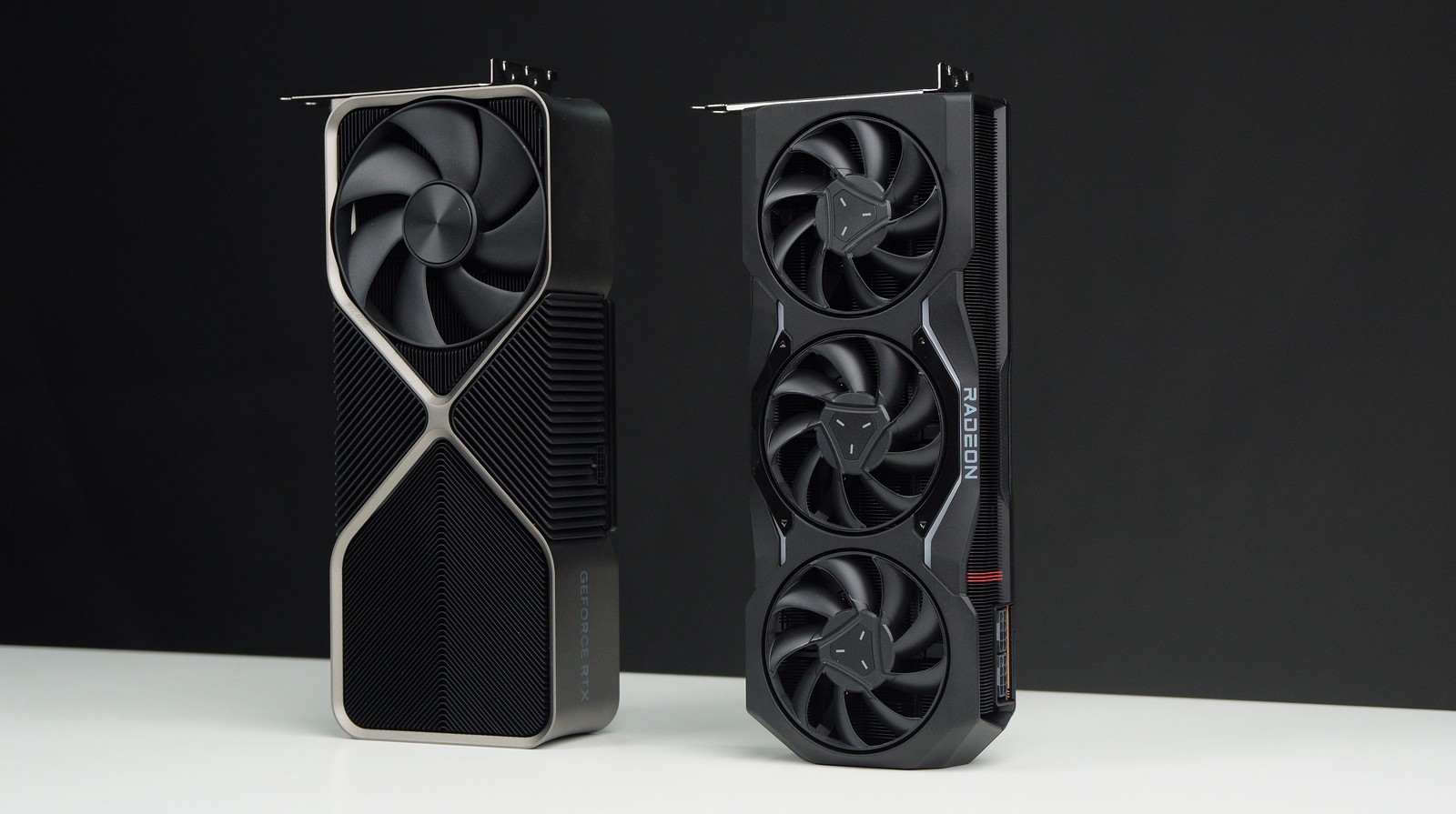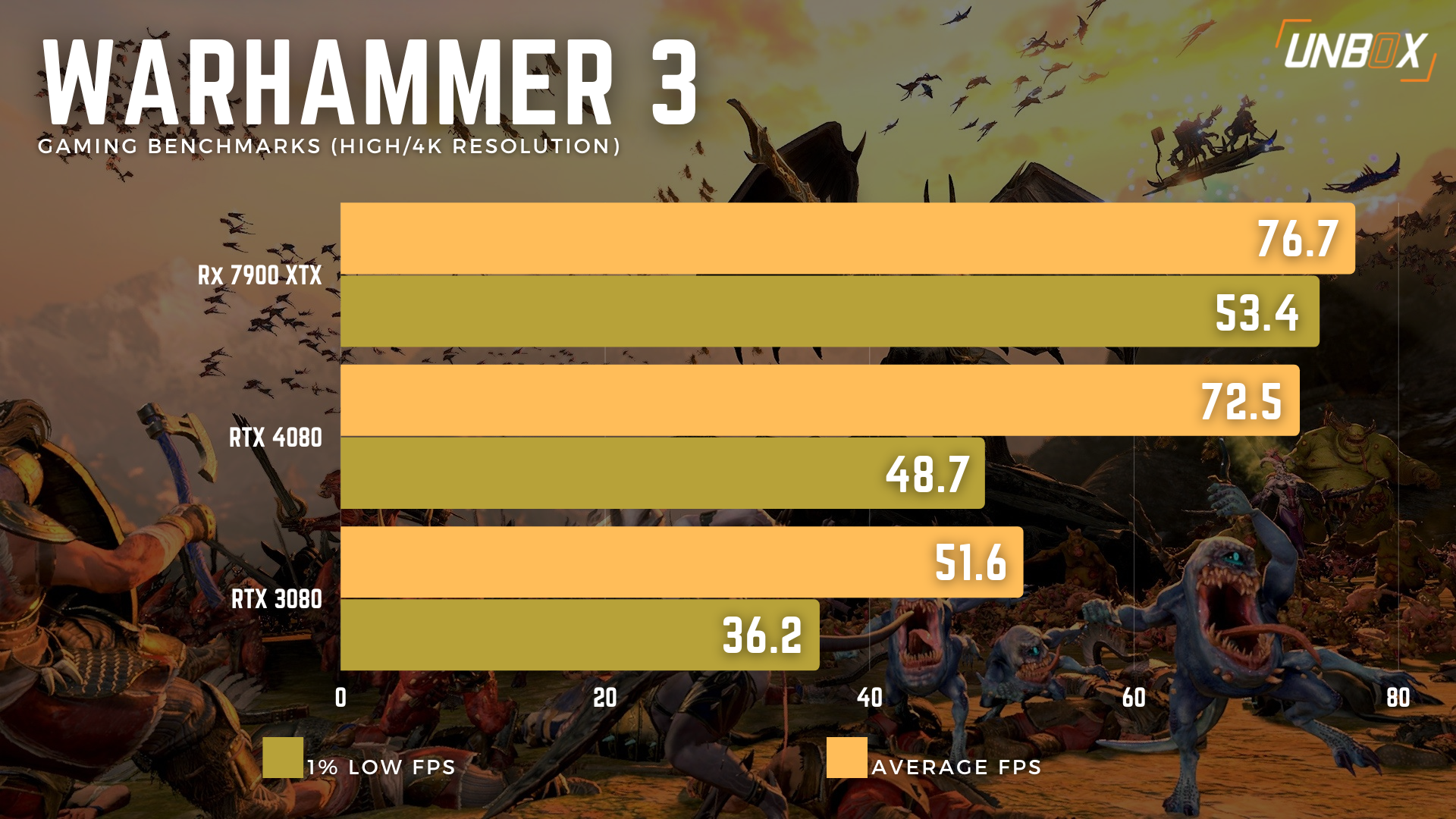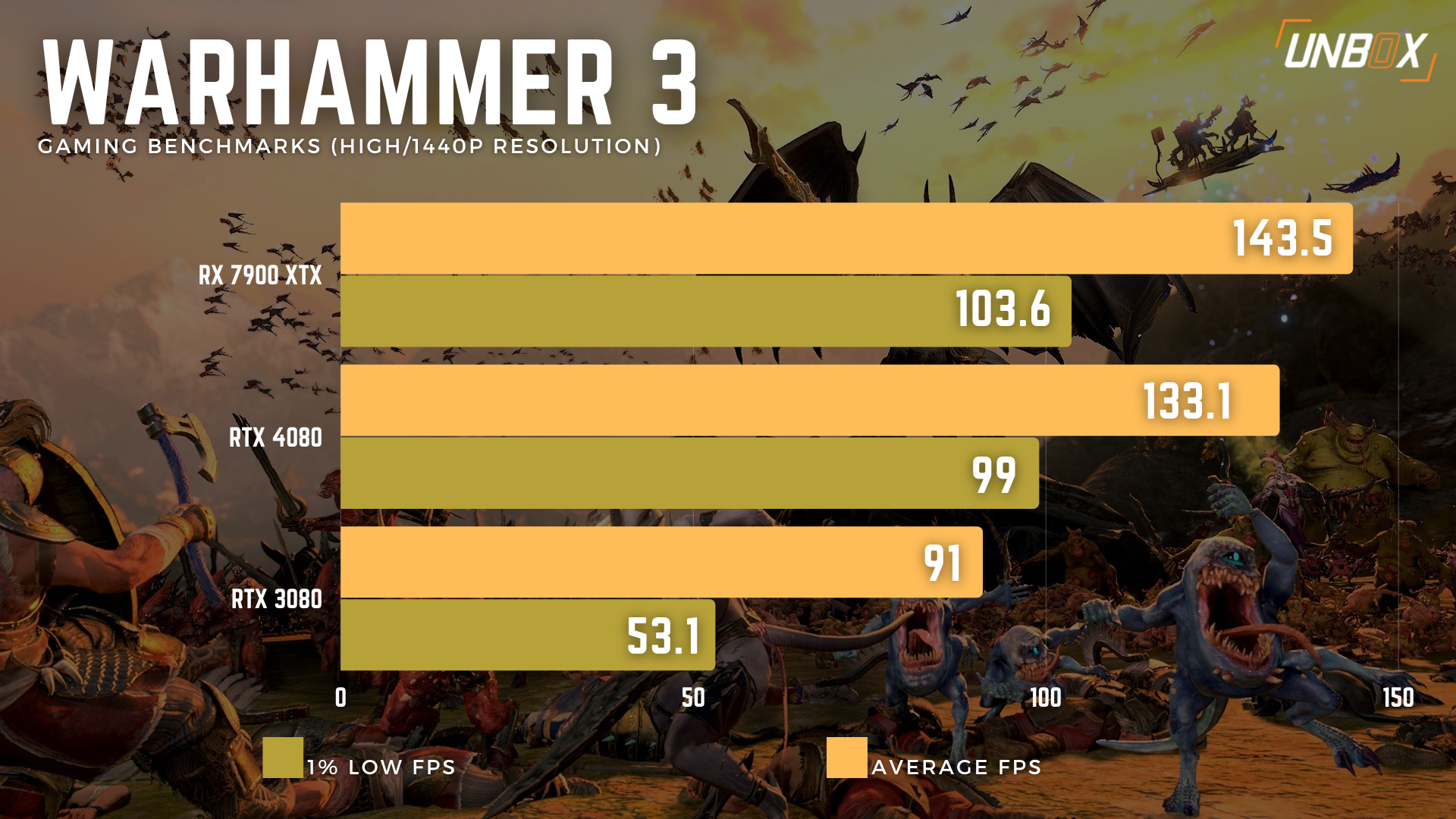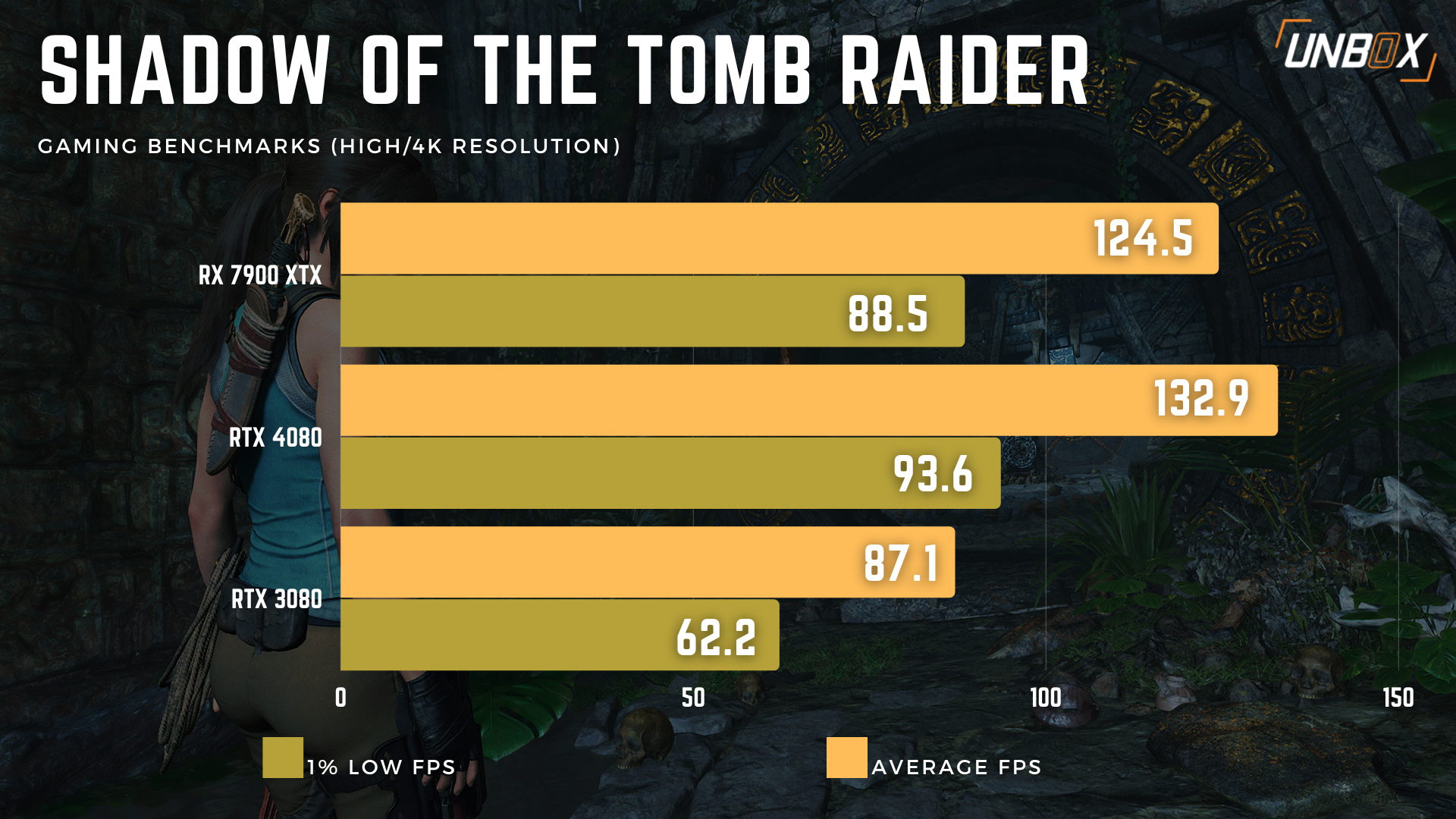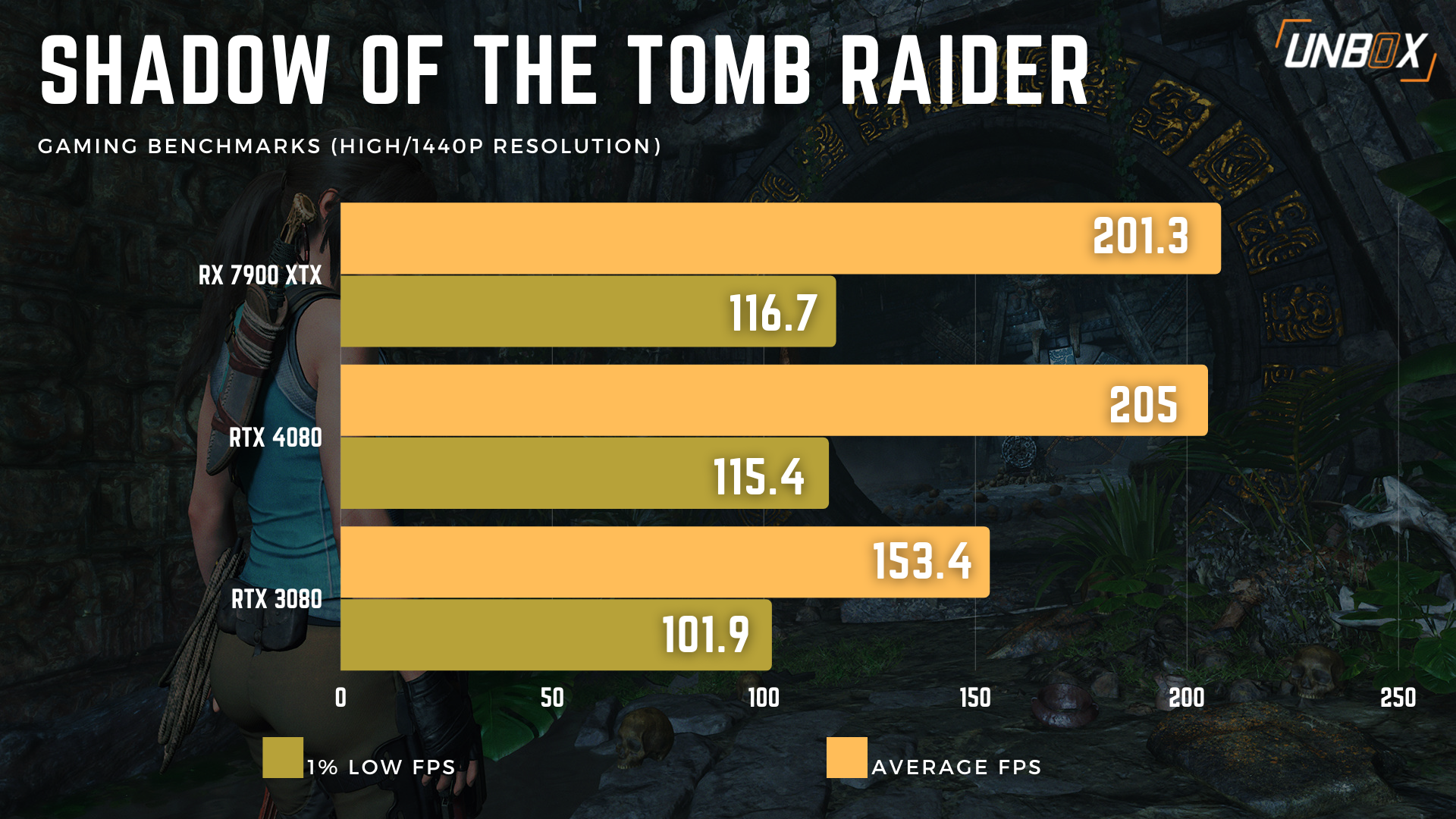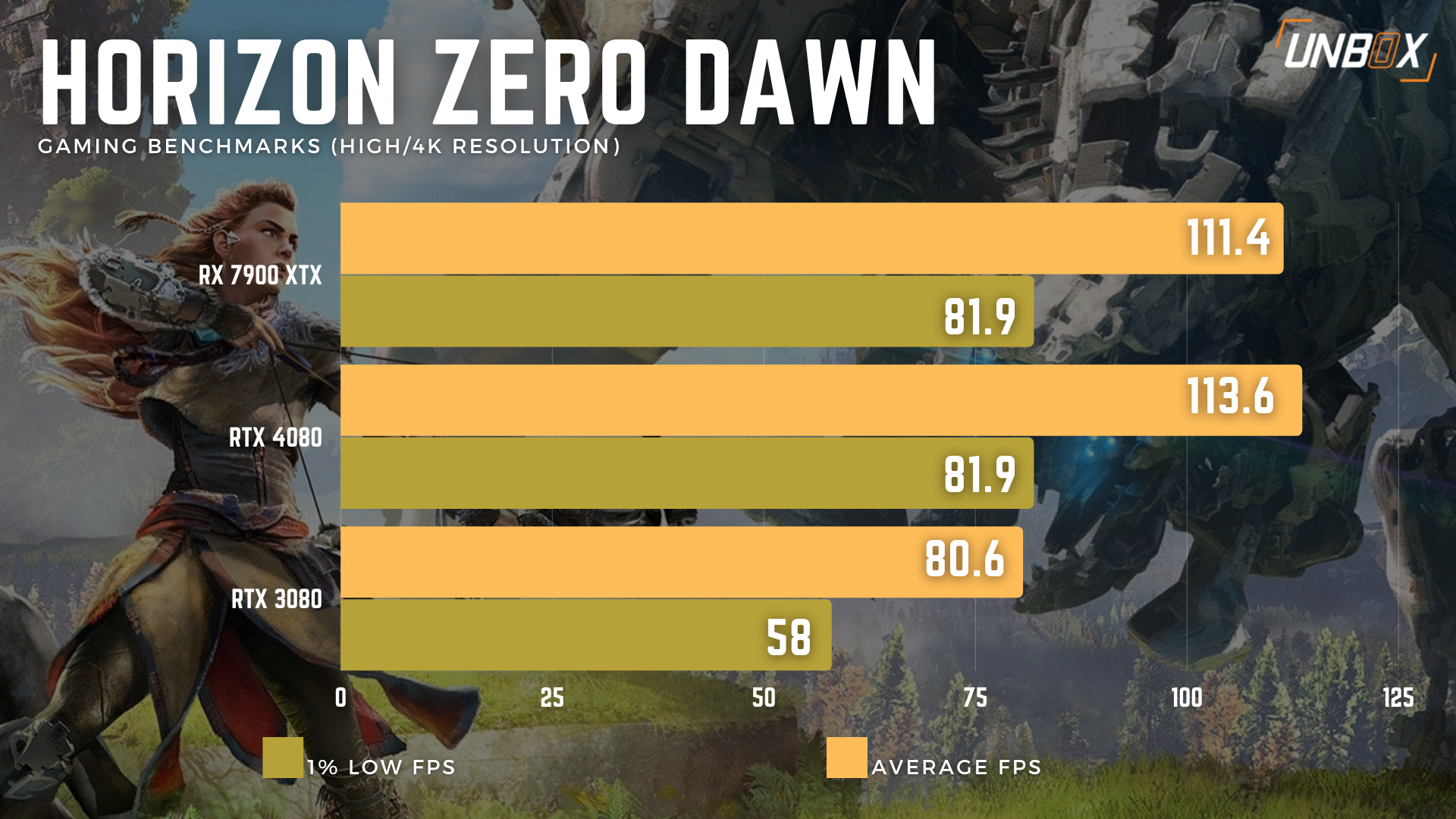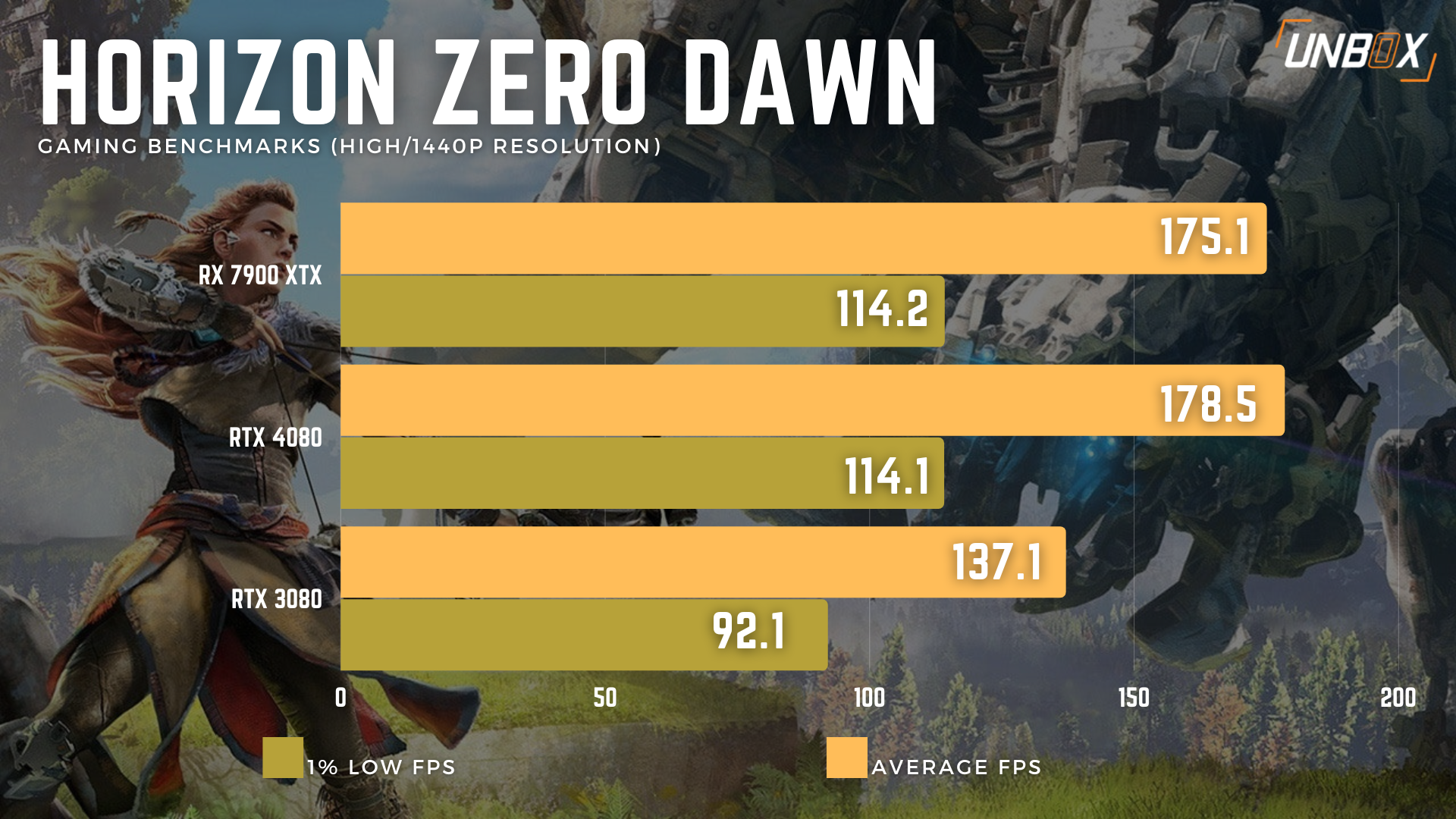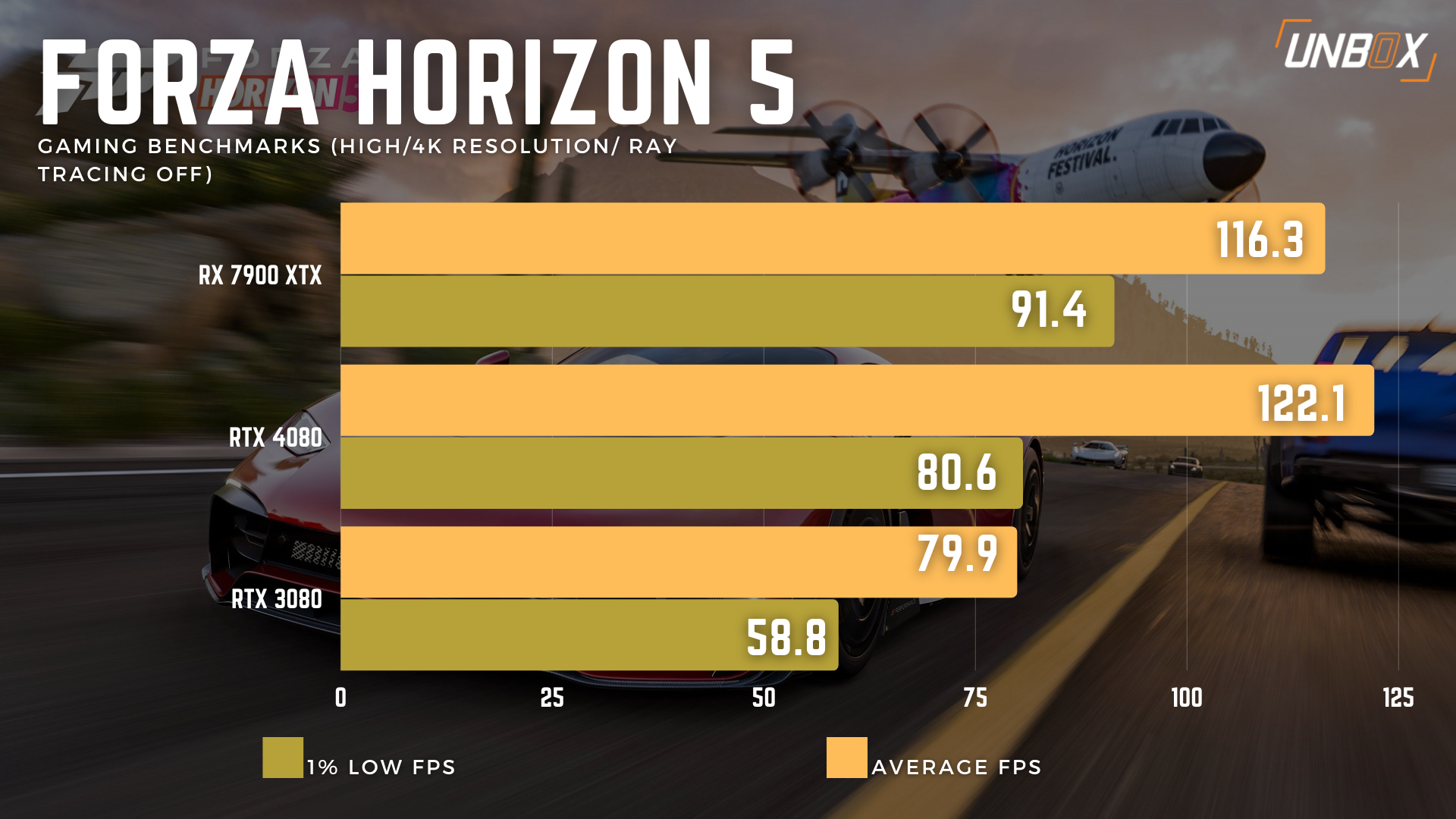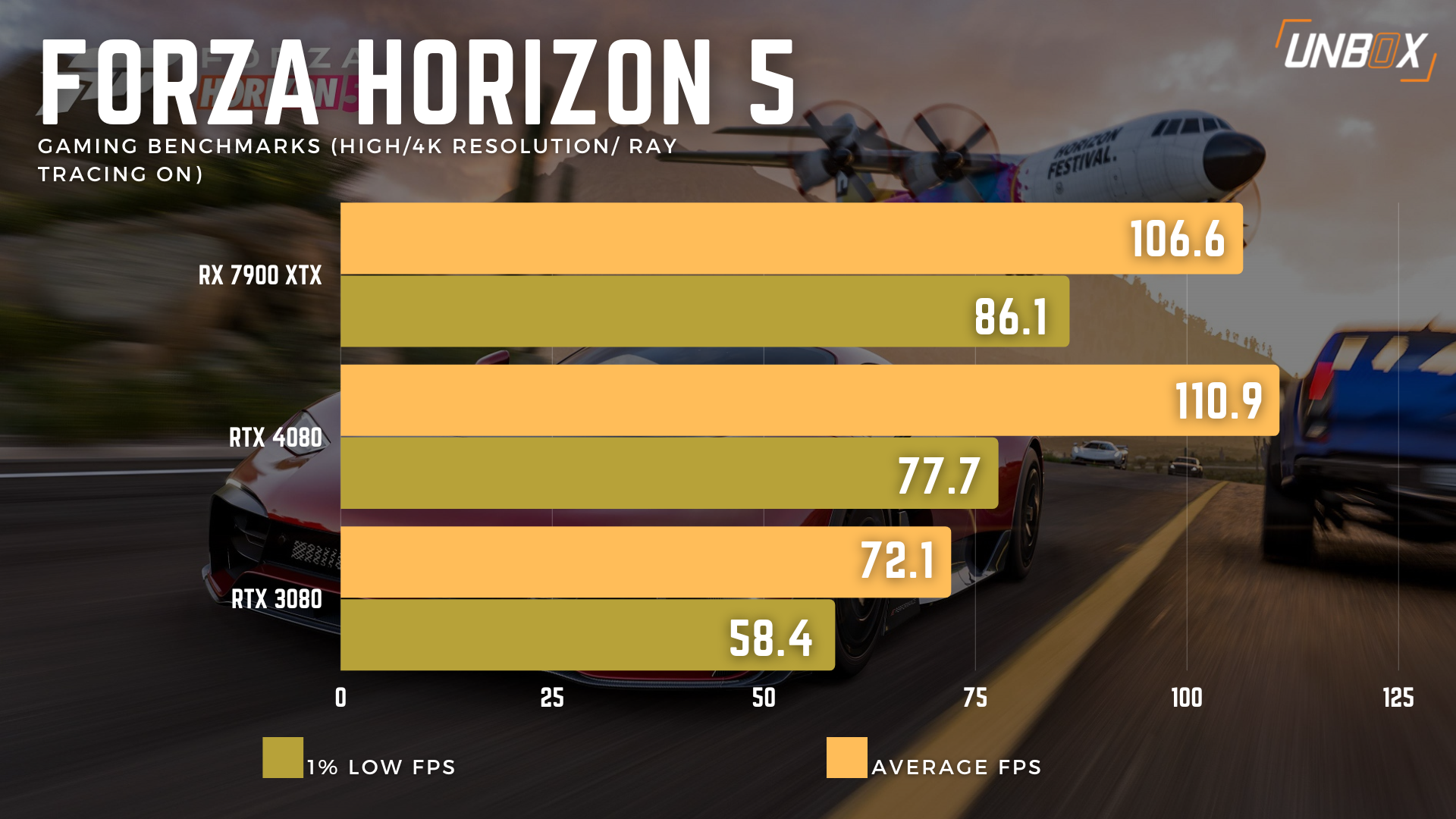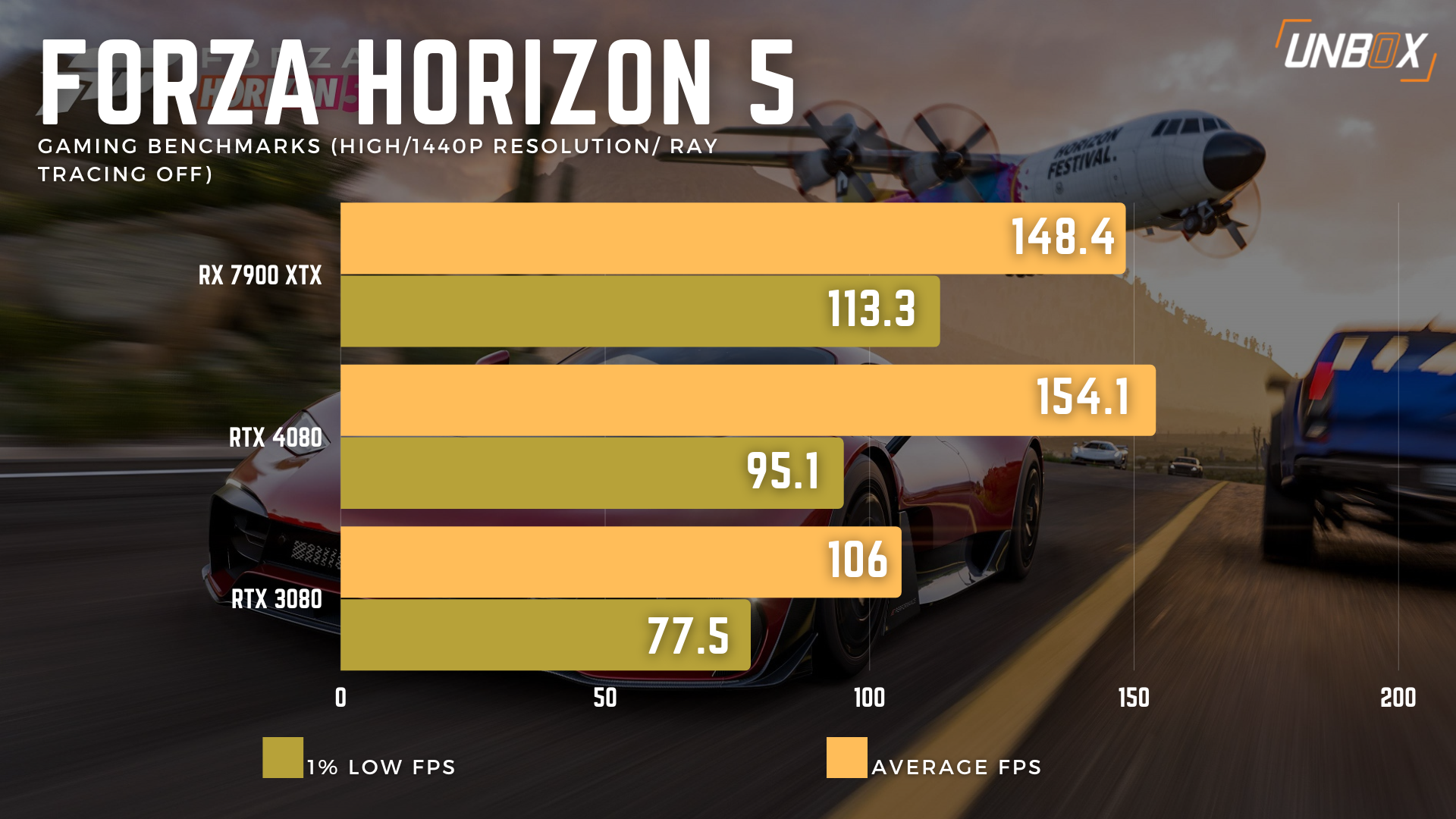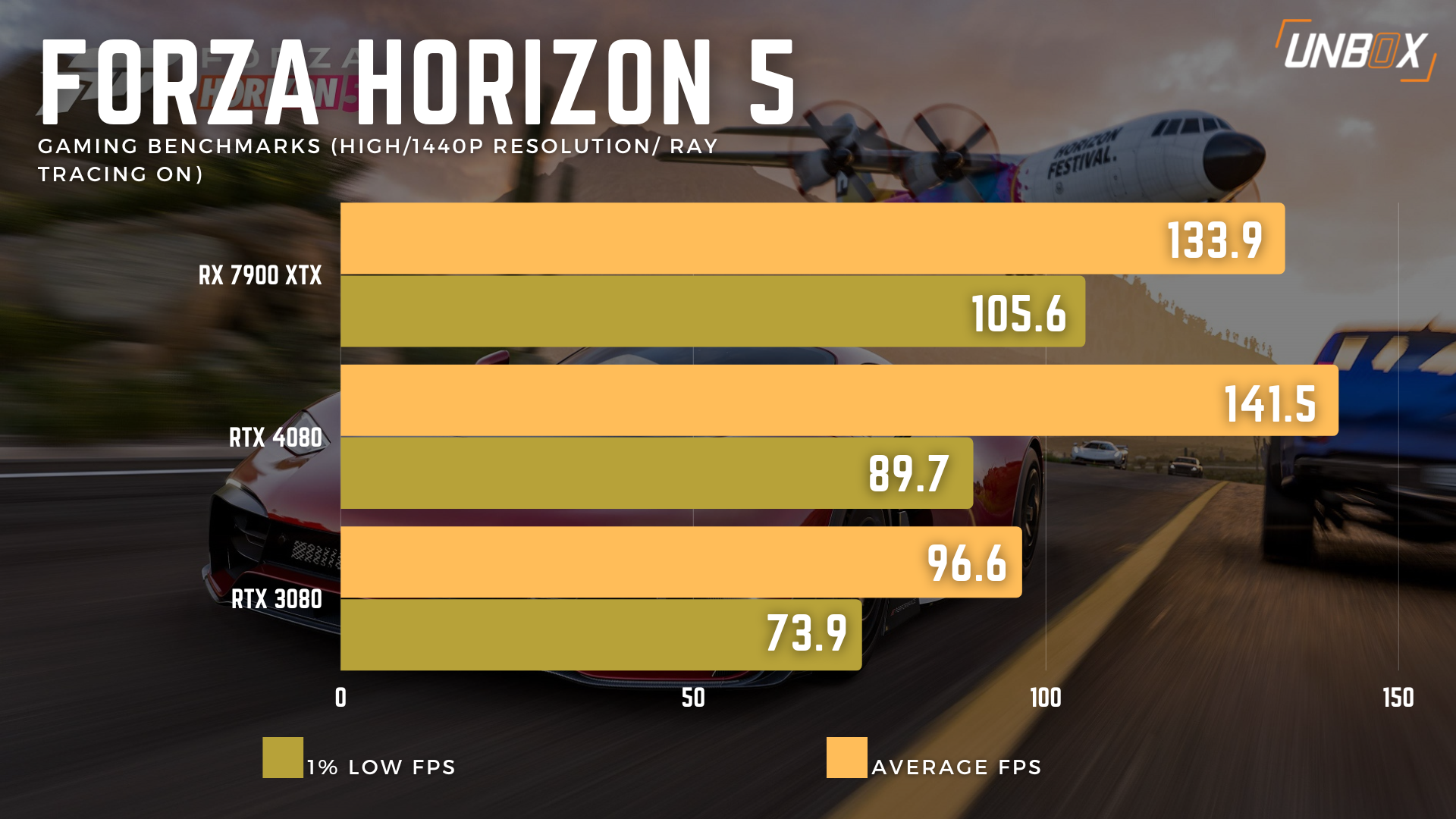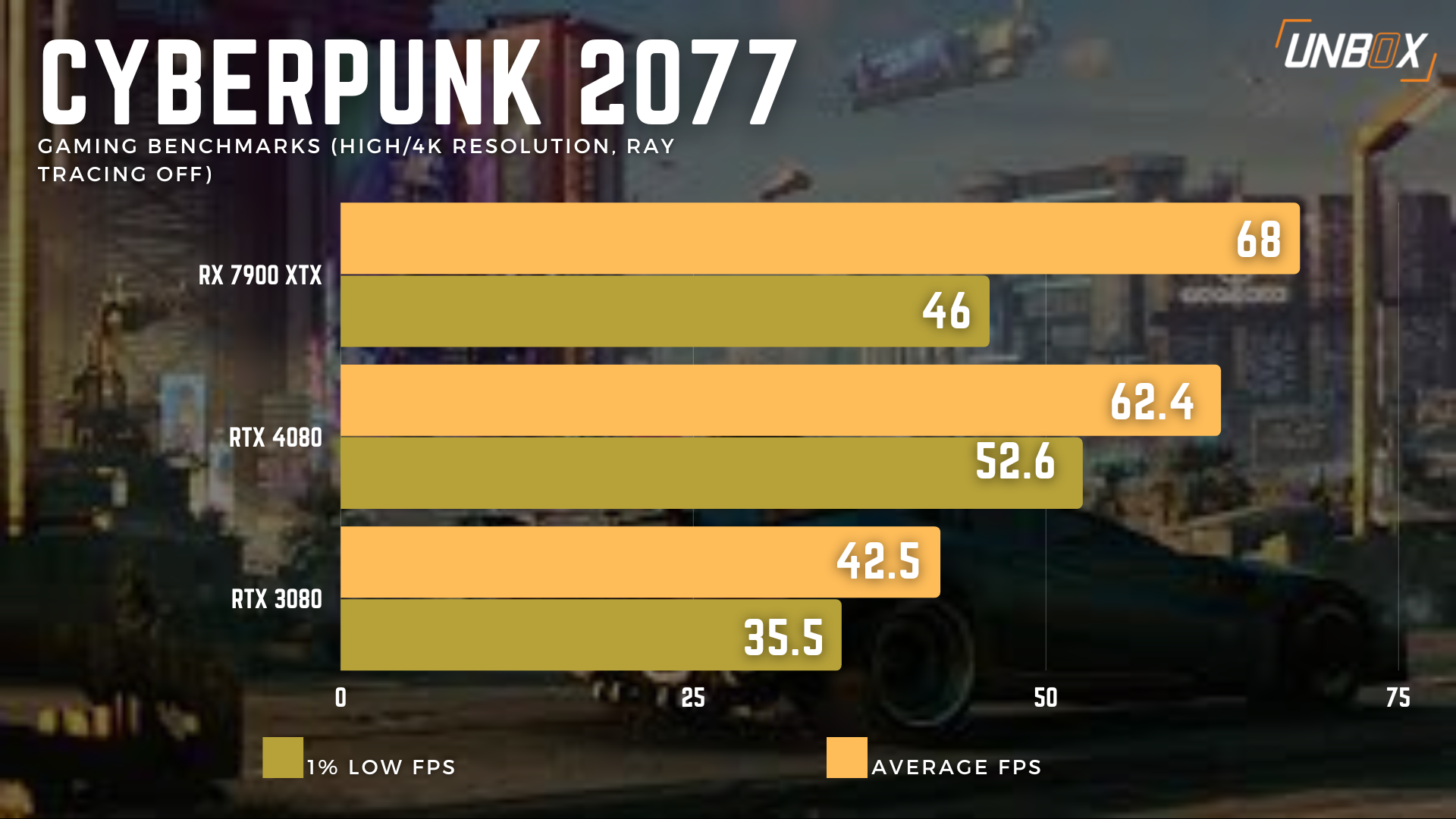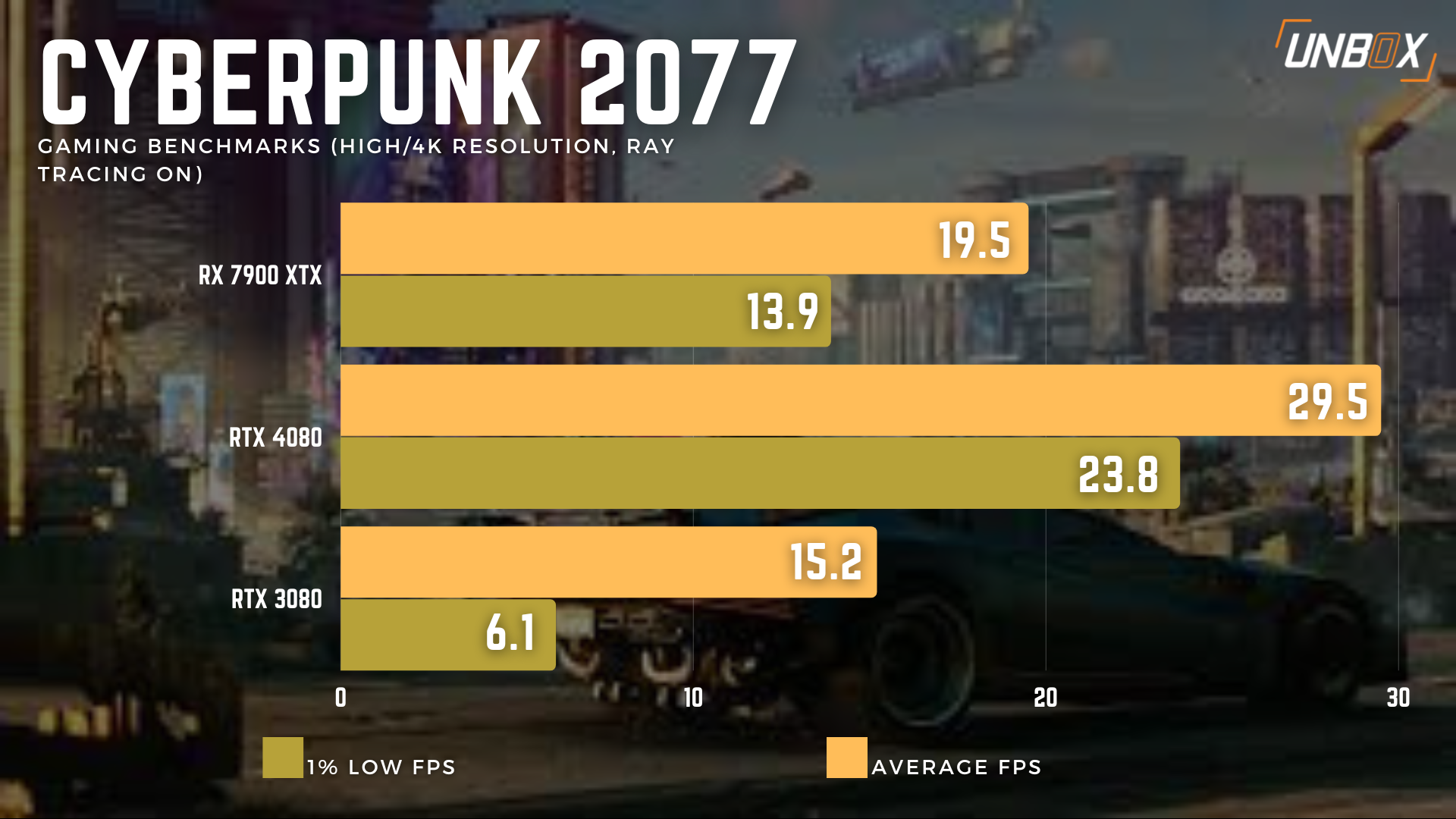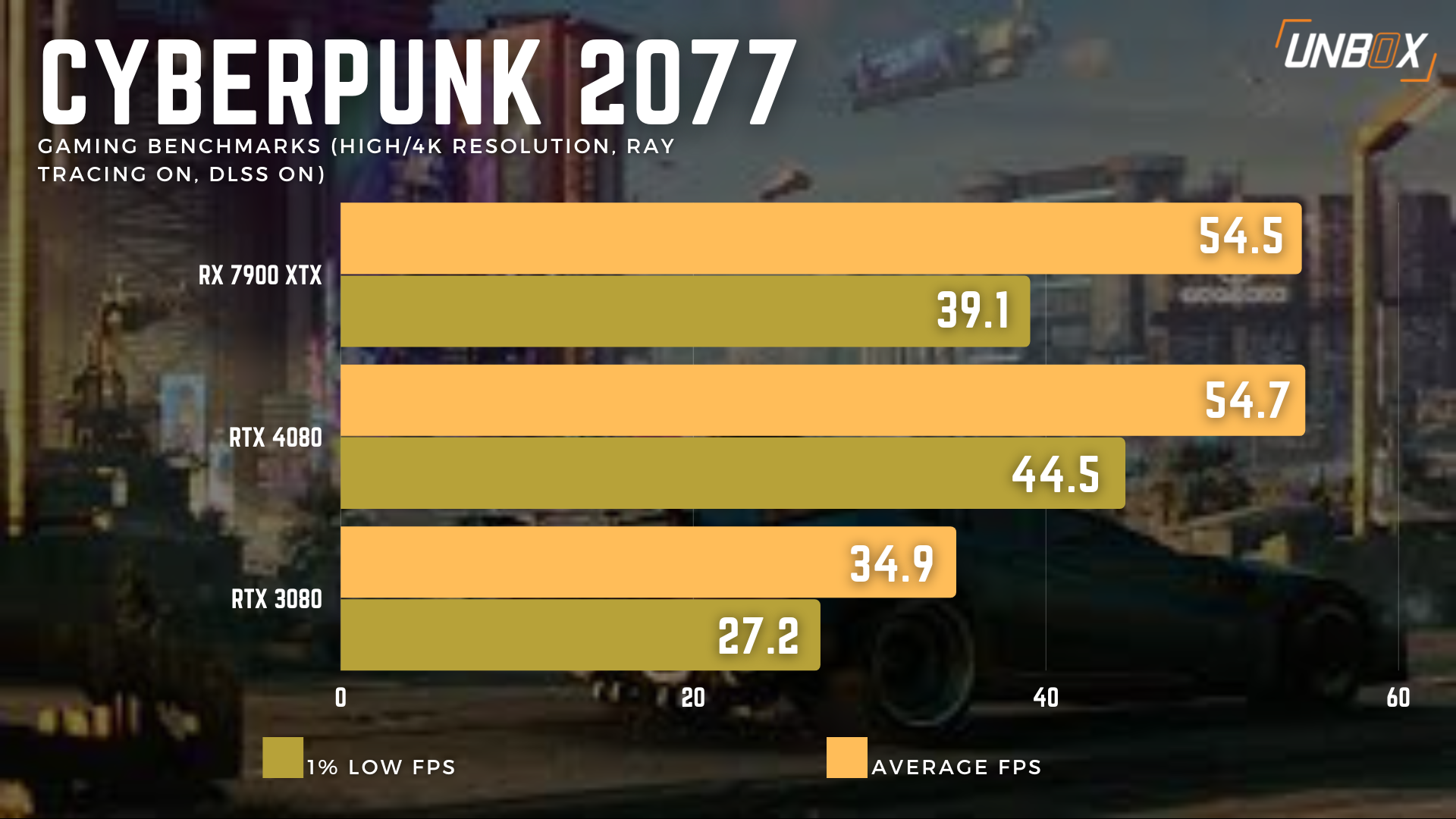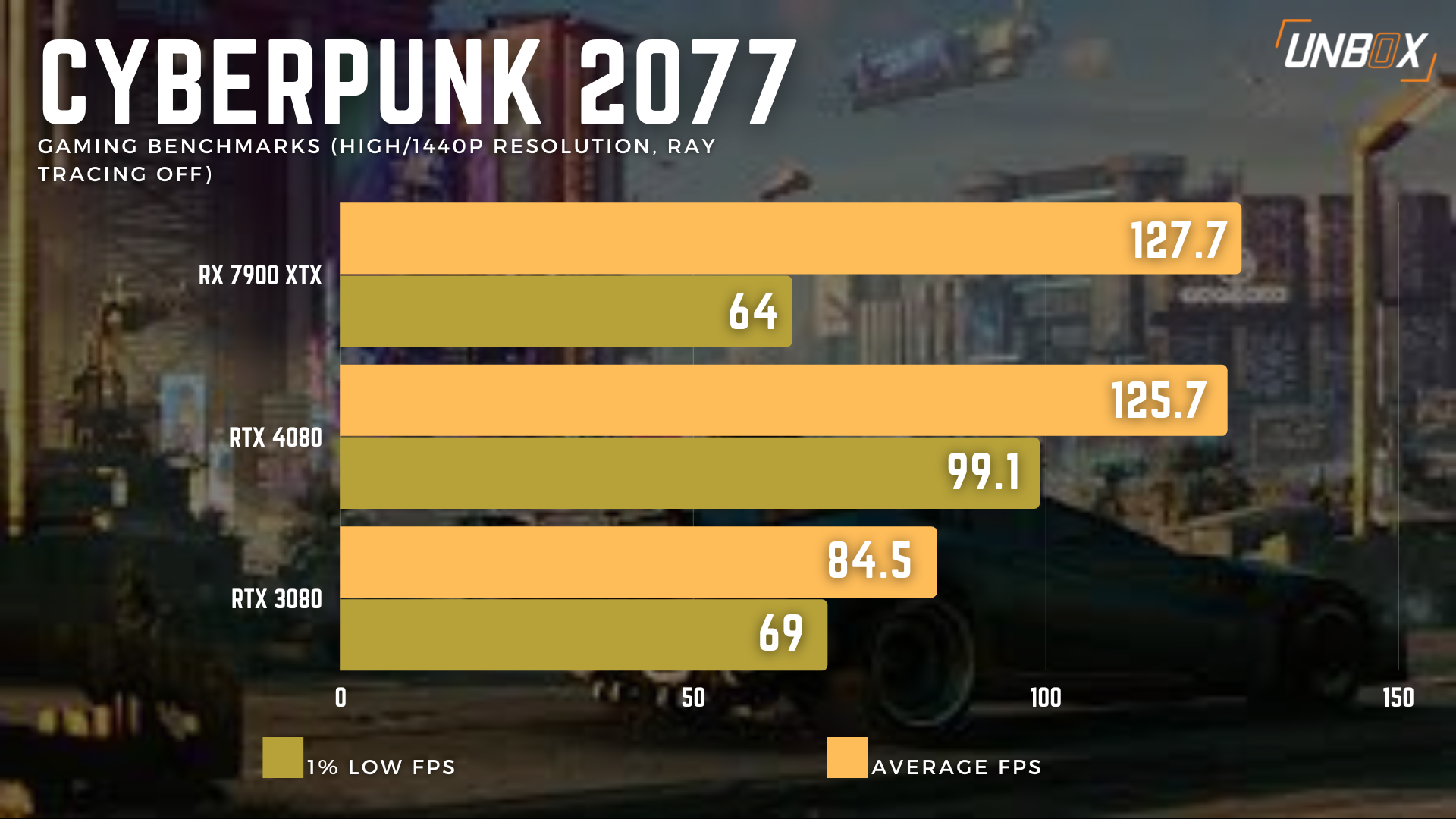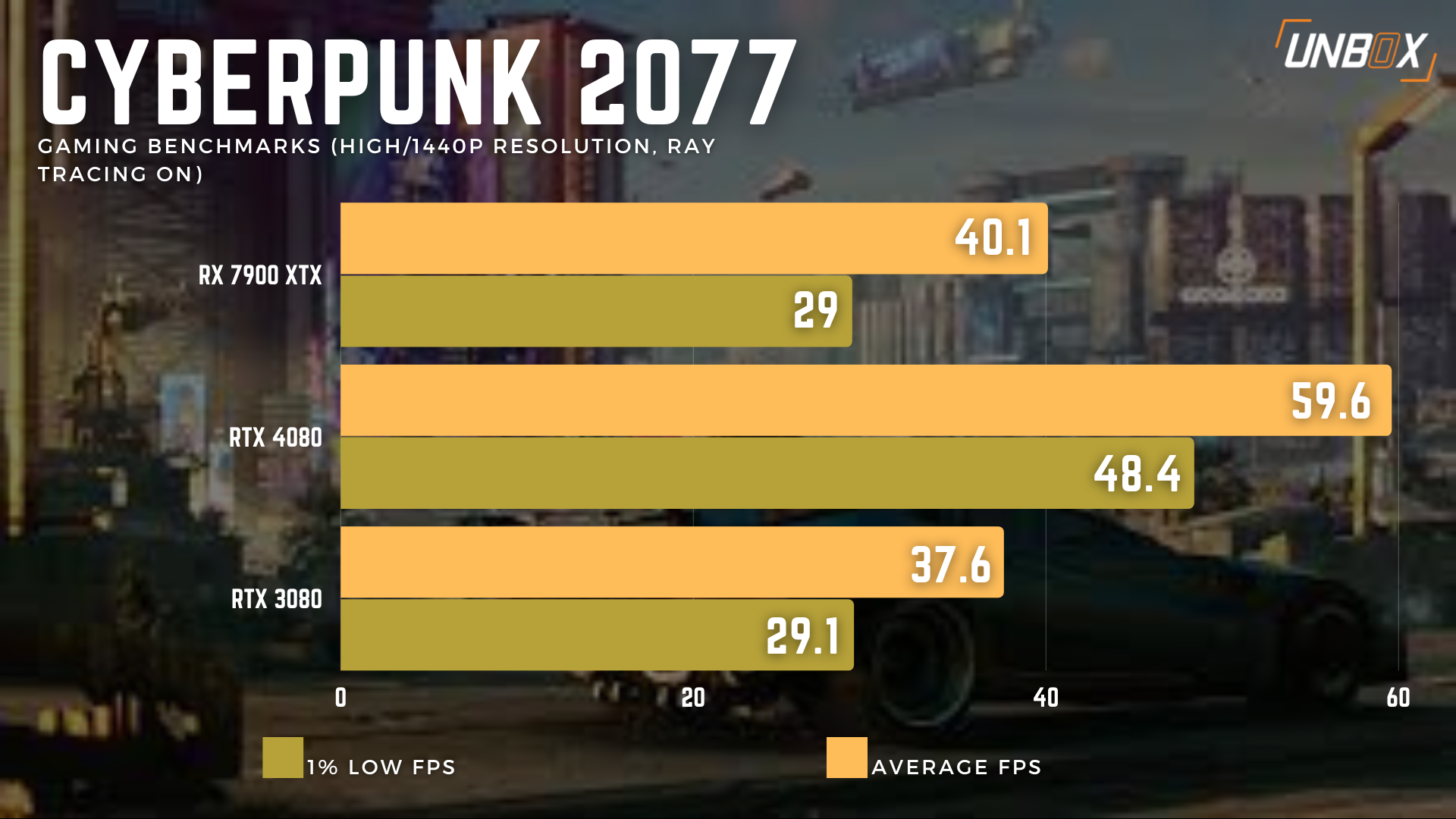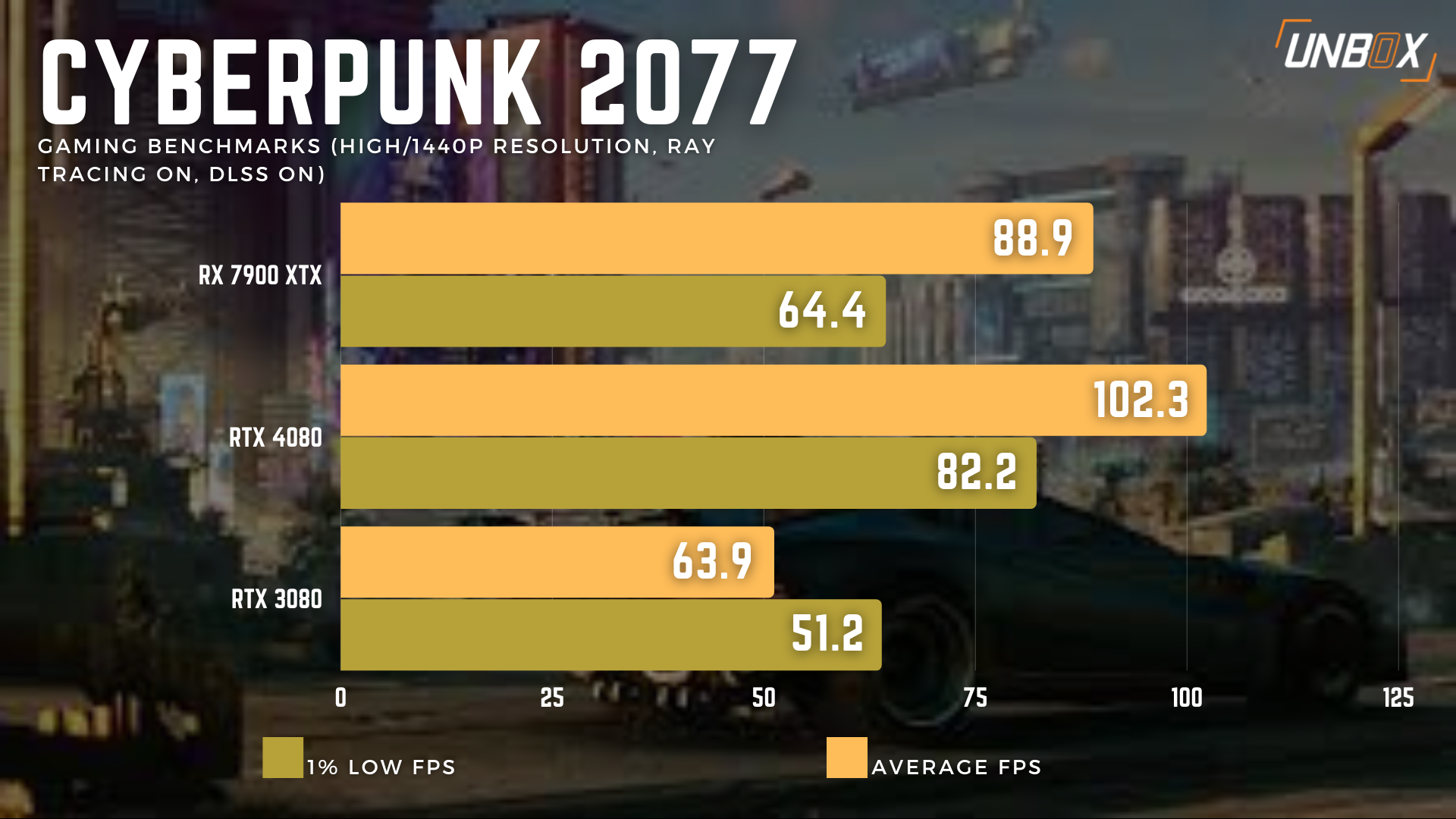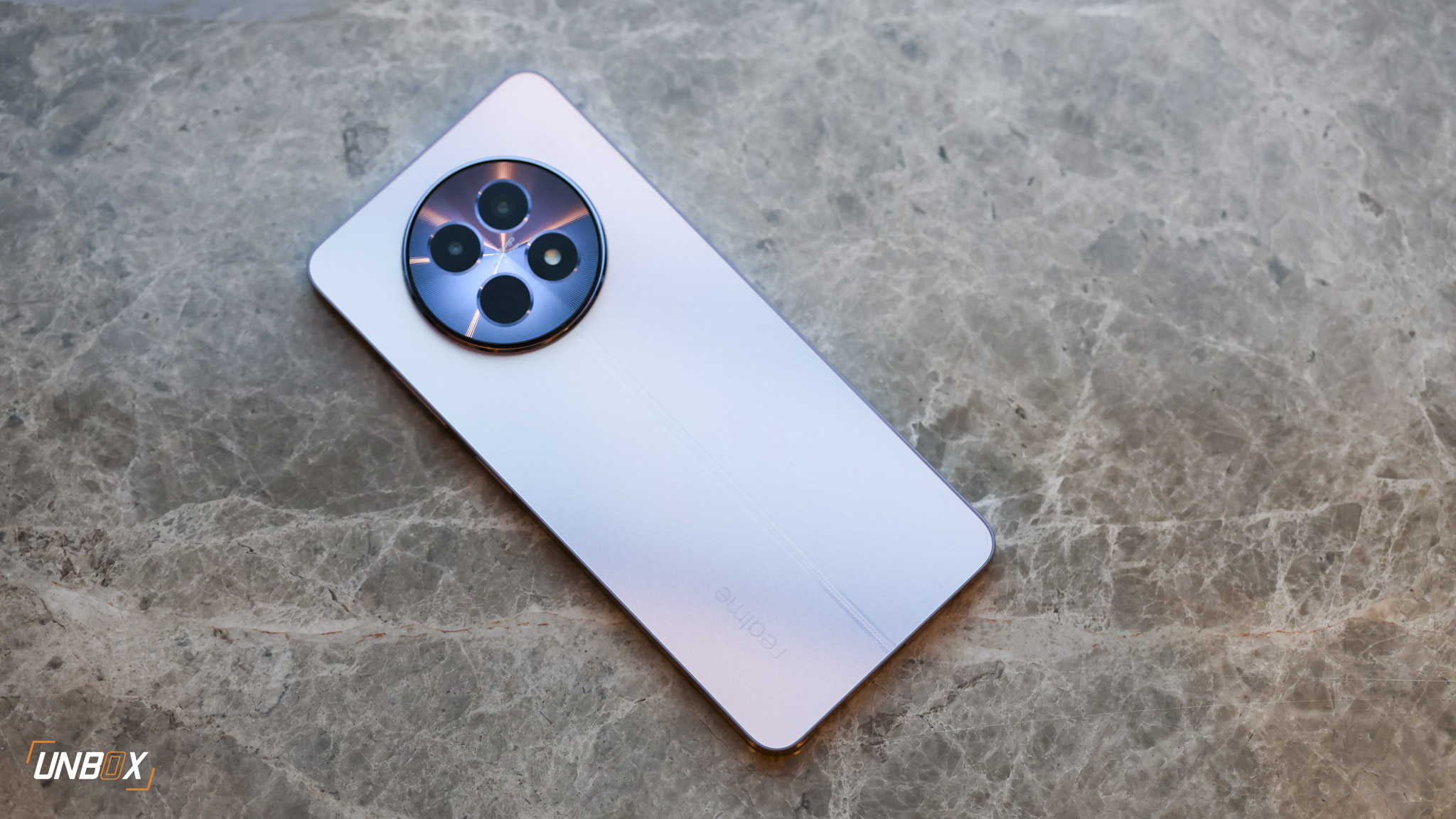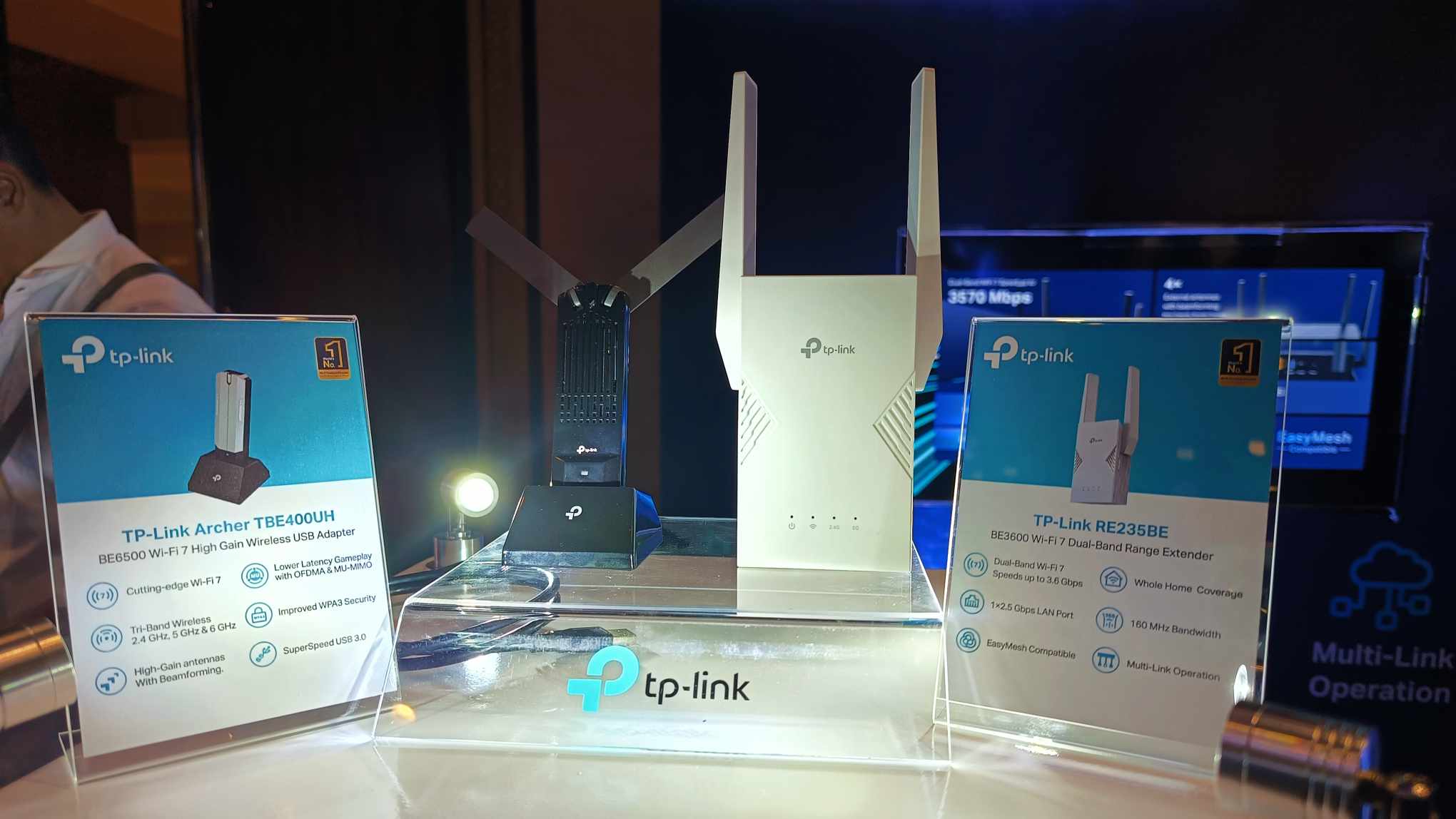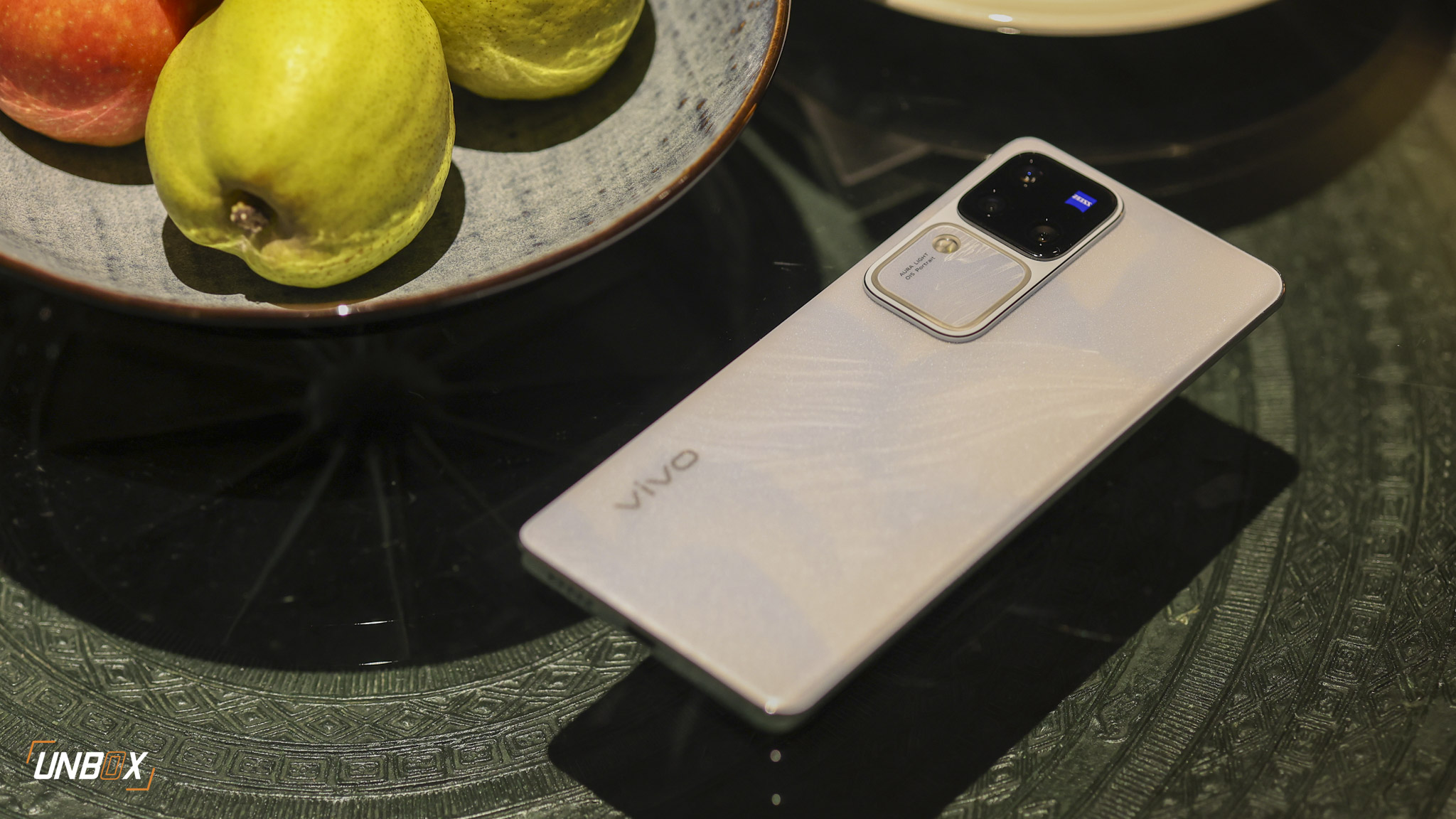2022’s flagship GPUs for both team red and green have officially dropped, and we’ll finally be able to answer the biggest question of the season: should you get the Radeon RX 7900 XTX or the GeForce RTX 4080? After gaming and testing both cards and writing this AMD Radeon RX 7900 XTX review, the answer might surprise you:
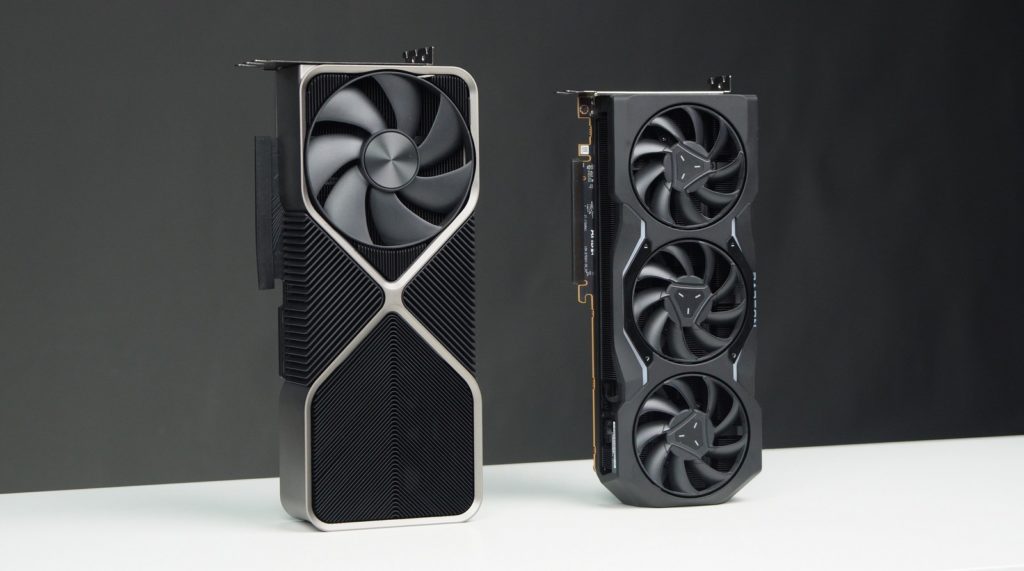
Is the AMD Radeon RX 7900 XTX easier to install and put into your case?
Yes, if you’re comparing it to the absolutely gargantuan RTX 4080. The AMD Radeon RX 7900 XTX is relatively shorter at just around 287mm lengthwise compared to the 304mm of the RTX 4080. That means it’ll integrate itself easier into existing cases and systems compared to either the NVIDIA RTX 4080 or 4090.
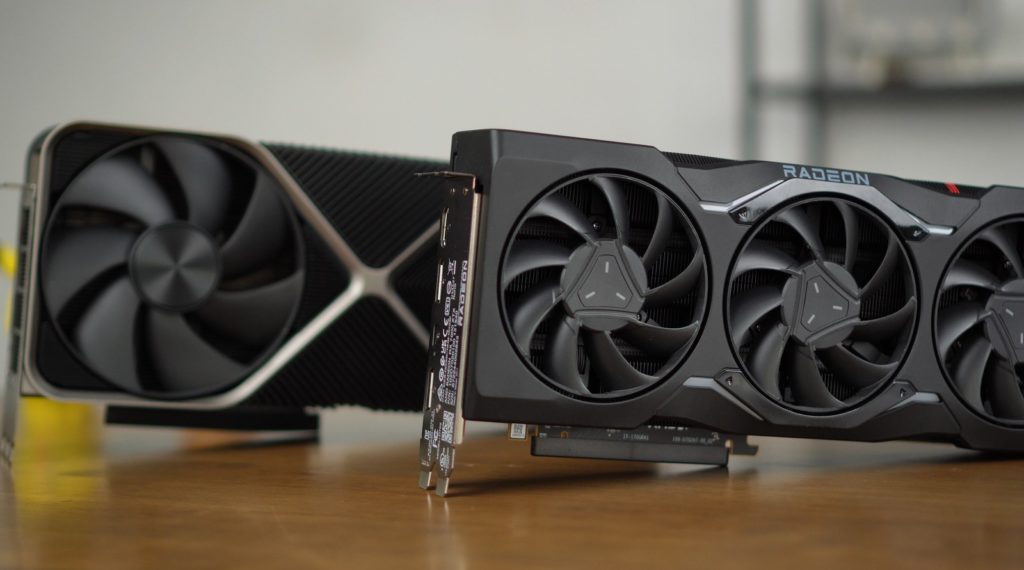
The AMD Radeon RX 7900 XTX also uses a 2.5 slot configuration rather than the absolutely chunky 3.5 slot of its competitor card, and normal 8-pin connectors VS NVIDIA’s PCI Gen 5 12VHPWR connector.
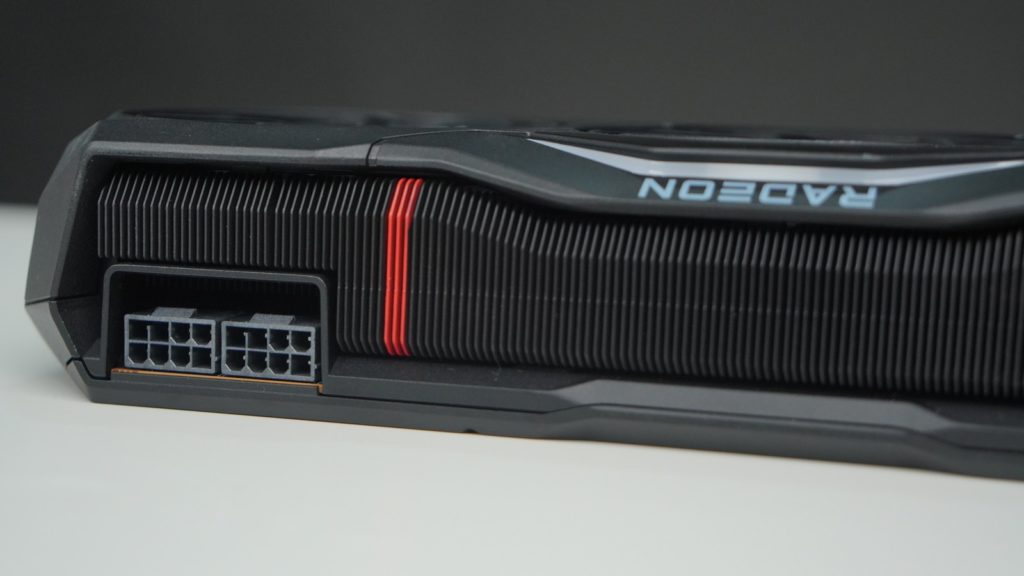
All that boils down to is that AMD’s new card requires little to no change to existing gaming rigs, which is potential savings for anyone looking to upgrade.
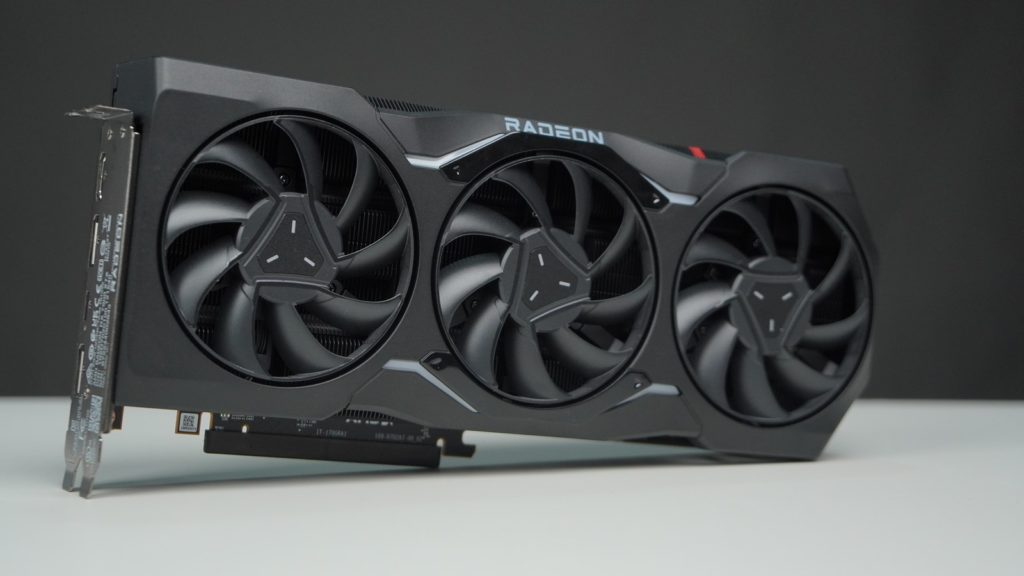
Why is the AMD Radeon RX 7900 XTX considerably cheaper than the RTX 4080?
While I wouldn’t call the AMD Radeon 7900 XTX affordable by any stretch of the imagination thanks to its $999 MSRP, it’s considerably cheaper than the $1,199 MSRP of NVIDIA.
That’s all thanks to AMD’s new way of making GPUs based on their RDNA 3 microarchitecture. See the traditional way of making GPUs, the thing that actually makes a graphics card tick, was through the use of single large dies. These large dies are monolithic designs, which require massive flawless wafers to create in the case of the RTX 4080 and 4090. There will always be wastage in these wafers and dies which is inherent in the manufacturing process and contribute to the cost of making the GPUs.
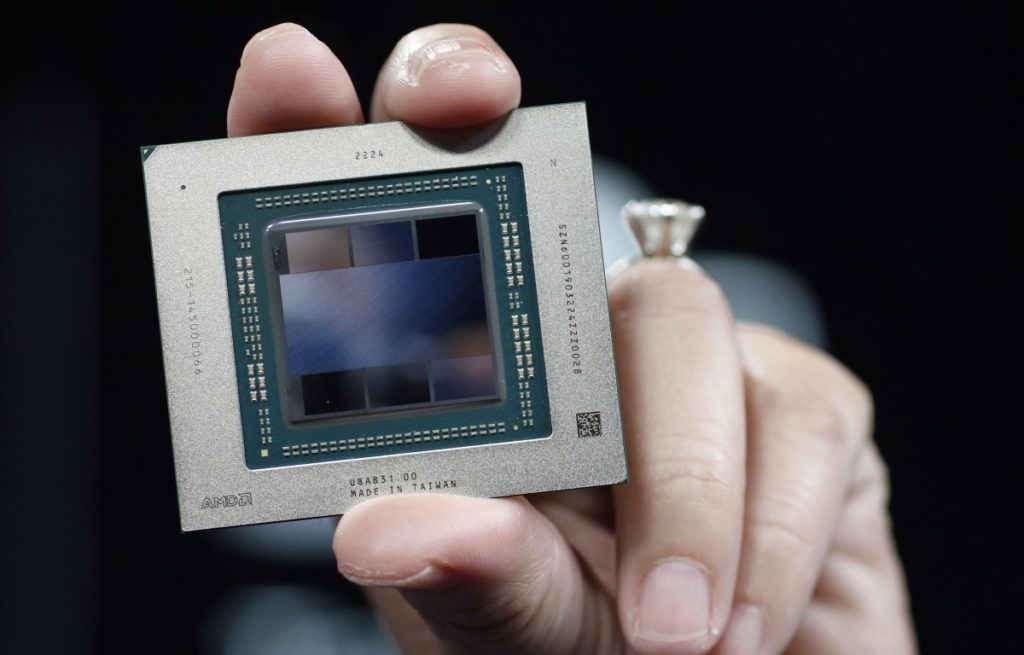
AMD has gone with a different approach: their GPUs use chiplets, a combination of smaller dies made from smaller wafers that ensure less wastage in the manufacturing process.
This smarter way of manufacturing means AMD can churn out high-performance GPUs made in the 5nm process in a more economical way compared to its competitor, which is one of the reasons why AMD has managed to reduce prices on their new cards compared to the competition.
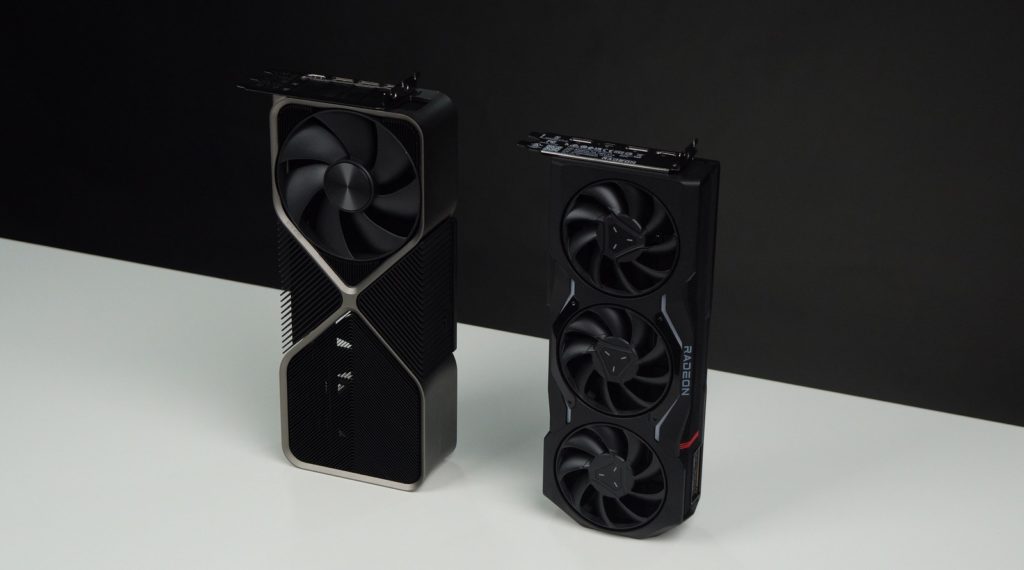
Do you need to upgrade to a beefier PSU?
Unless you’re still stuck with a PSU that’s below 750W, you’re not required to change to a better power supply with the RX 7900 XTX. AMD lists the card’s total board power at 355W which is slightly above the 300W of the RX 6900 XT.
Of course, that shouldn’t stop you from switching up to a higher-rated PSU if you have the budget for it. While the absolute bare minimum here is 750W, you’ll be safer with 850W or even a 1000W PSU especially if you plan to get a card made by AMD’s board partners like ASUS or Powercolor.
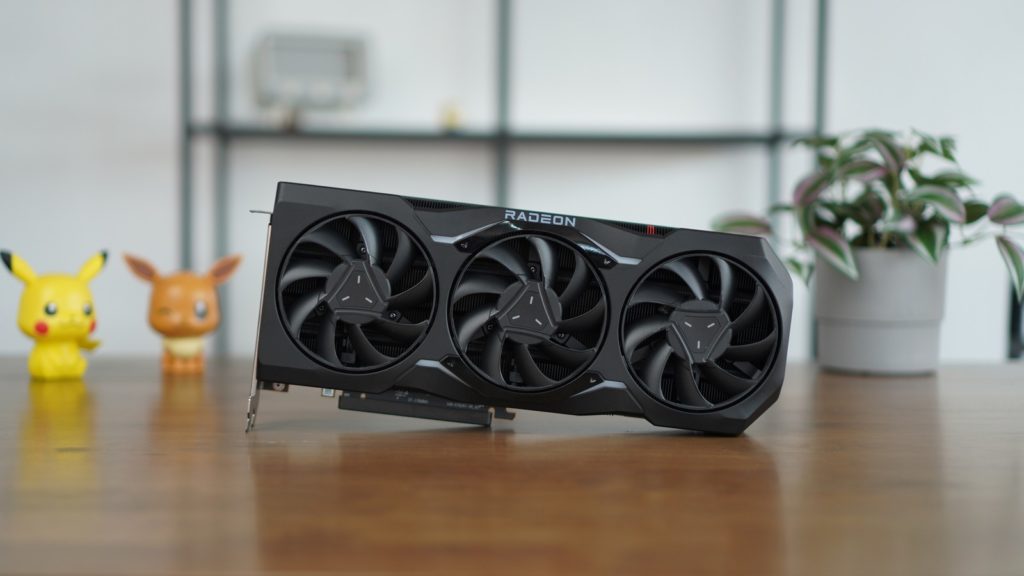
How does the AMD Radeon RX 7900 XTX perform VS the NVIDIA RTX 4080?
Pretty well, all things considered. The AMD Radeon RX 7900 XTX trades blow with the RTX 4080 in 4K when it comes to pure rasterization and even comes out on top in some of the games we tested. That makes it good value especially if you compare how much each card retails for in the market with their MSRP.
Both cards are fairly capable in 4K as well, with only a few frames separating both from each other. Take note that our test bench for this review was the same as what we used in our RTX 4080 review: specifically, a ROG Helios case with an Intel Core i9-12900K nestled inside a ROG Maximus Z790 EXTREME, along with 32GB of Kingston FURY Beast 6000MHz DDR5 RAM, 1TB of NVMe 3.0 storage from T-Force, and a ROG Thor II 1000P PSU.
The gap in performance starts to widen when you take a look at 1440P performance, but even then the RTX 4080’s advantage isn’t that large compared to the RTX 4080.
Is the Radeon RX 7900 XTX any good at ray tracing?
Unfortunately, AMD still trails in terms of ray tracing performance VS NVIDIA, though the gap has closed a bit. Performance numbers in RT without upscaling help show the Radeon RX 7900 XTX trailing heavily VS the RTX 4080. Thankfully though AMD’s FSR upscaling tech has improved quite a bit to the point where it’s pretty close to NVIDIA’s DLSS tech in terms of performance boost.
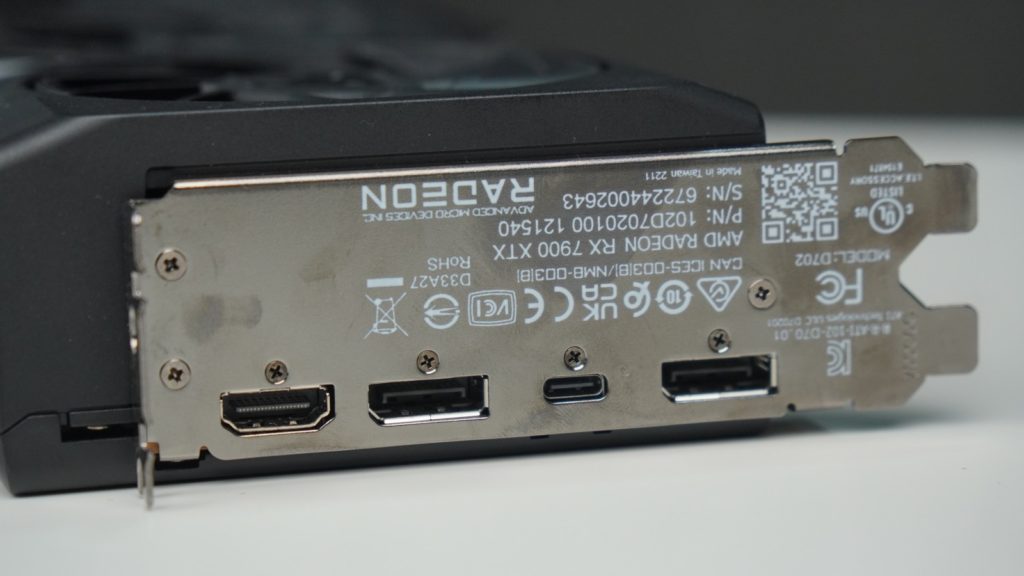
Anything else we need to know?
There was an issue with some Radeon RX 7900 XTX cards sent for review wherein they addressed high power use during video playback when using the cards’ built-in media decoding hardware. AMD also said that they know about high idle power when using select high-resolution and high refresh rate displays, which should be patched in the future. For full disclosure, we did notice that the card caused the system to draw around 210W when watching YouTube, which is a little high. We are using a 4K monitor (specifically the Huawei MateView).
As far as thermals go, the Radeon RX 7900 XTX isn’t as efficient in dissipating heat as the RTX 4080, as we saw temps hitting 80 degrees overall during gaming. This may change with the more efficient third-party AIB cards by AMD’s partners down the line.
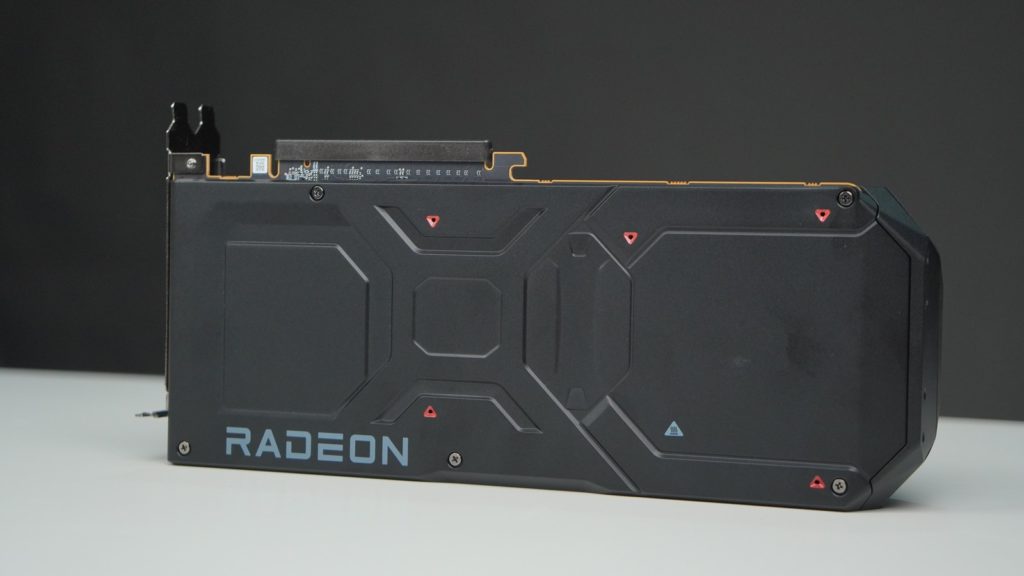
Should you buy the AMD Radeon RX 7900 XTX over the NVIDIA RTX 4080?
It all boils down to price, and we’re not talking about the stated MSRP. We all know that MSRPs are a joke at this point, especially since both AMD nor NVIDIA don’t sell reference cards in the Philippines. If you’re looking at buying either of these cards you’ll be buying them via AIB partners like ASUS and PowerColor, and their sticker price will likely be far higher than what their MSRPs are.
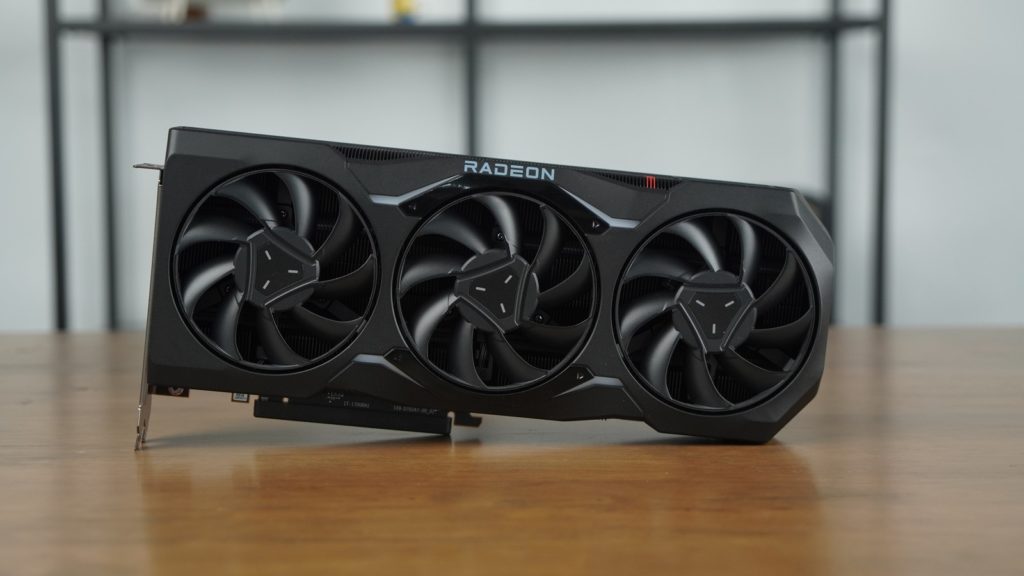
That being said, if you really don’t care that much about ray tracing performance, and want something that’ll be able to run games in 4K, then the AMD Radeon RX 7900 XTX is good enough as we found in our review. If you’re not looking to jump into 4K and are perfectly fine with 1440P, then we recommend skipping this current generation completely and going with previous-gen offerings from either company, which have had their prices cut heavily.
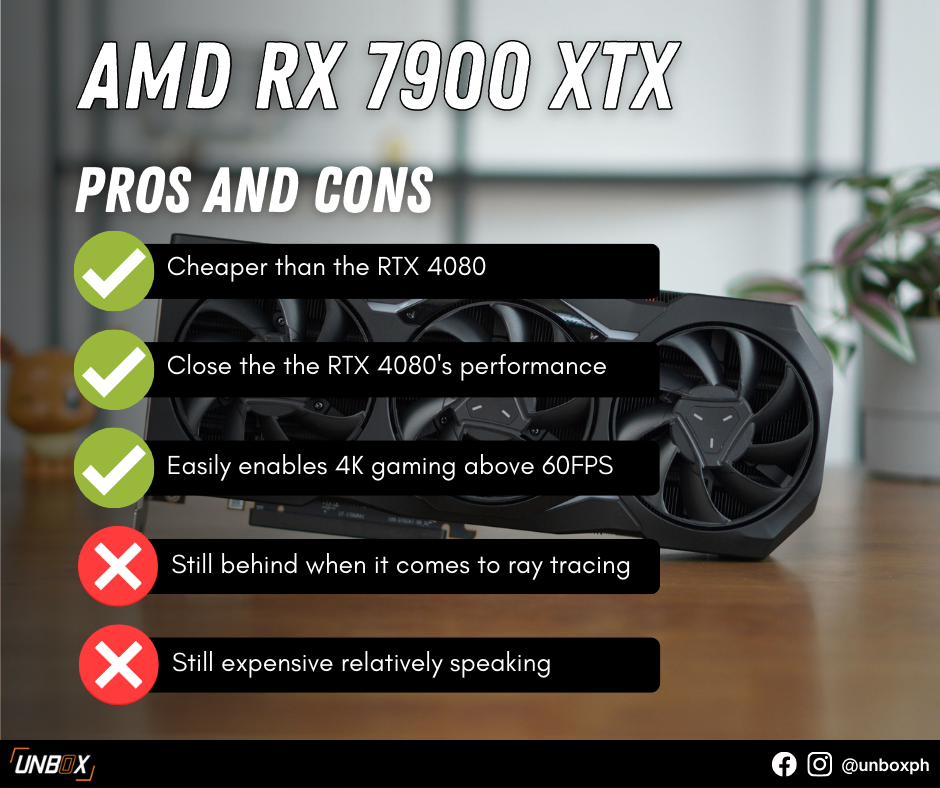
AMD Radeon RX 7900 XTX review price and availability
AMD says that the Radeon 7900 XTX has an MSRP of $999 or about Php 55.2K for the reference card, but since the company doesn’t sell that here, you’ll have to settle for AIB partner models instead. The most affordable we found on Lazada is the Gigabyte RX 7900 XTX Aorus Elite which is priced at Php 72,760, which is obviously far from the promised MSRP of AMD. Then again, similar third-party AIB cards sold by other partners are far more expensive – the most affordable we’ve seen is from Palit and is priced at Php 83,500.


